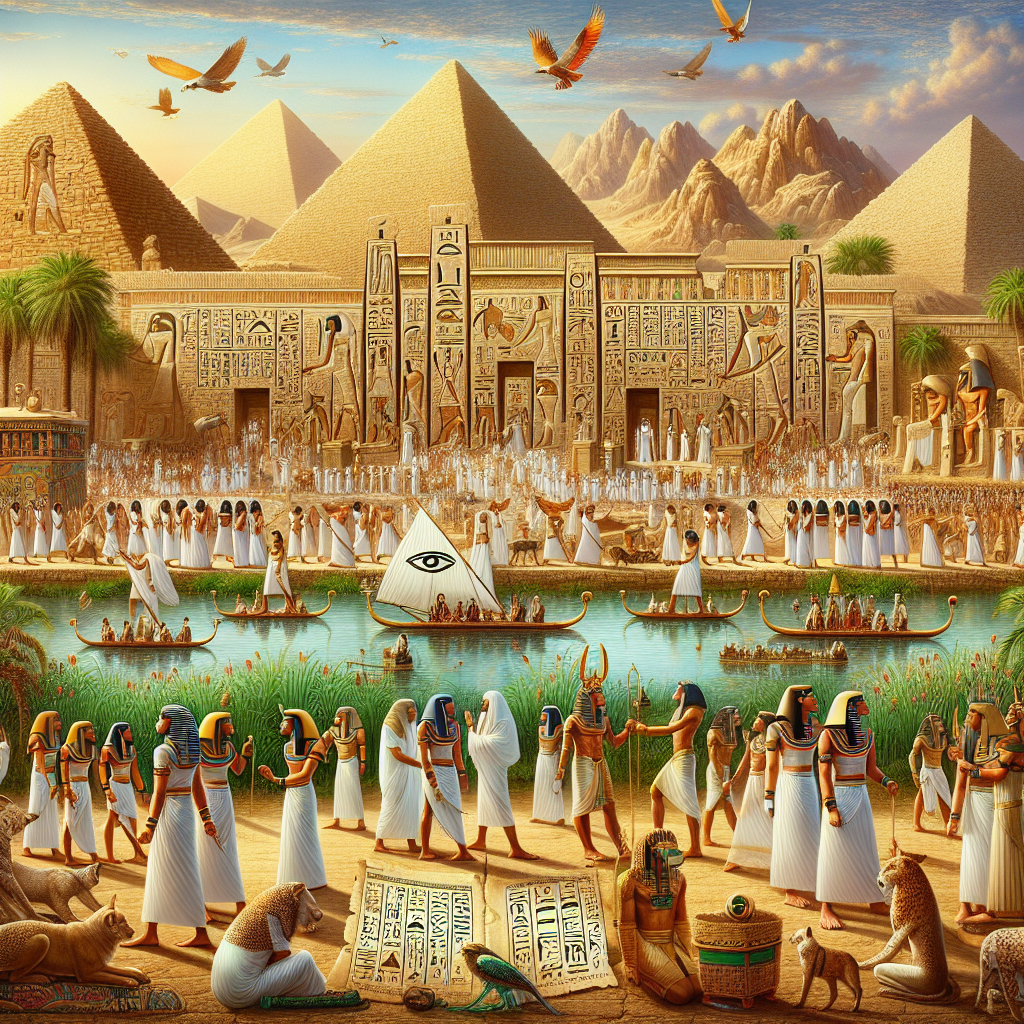Mythology in ancient Egypt was not merely a collection of stories; it was a profound and intricate framework that shaped every facet of life in this remarkable civilization. From the pharaohs who ruled with a divine mandate to the common people who sought solace in the tales of gods and goddesses, mythology infiltrated daily existence, guiding moral behaviors, societal norms, and religious practices.
The Pantheon of Gods and Goddesses
At the heart of Egyptian mythology was a rich tapestry of deities, each governing various aspects of life. Gods such as Ra, the sun god, symbolized powerful forces like creation, life, and light, while Osiris represented the afterlife and resurrection. Isis, Osiris’s wife, embodied motherhood, magic, and fertility, serving as a symbol of hope and nurturing. These divine figures not only populated religious texts but also served to explain natural phenomena and societal structures.
In Egyptian cosmology, the universe was often described as a chaotic abyss, from which gods emerged to instill order. This duality mirrored the society’s own struggles between chaos and order, justice and injustice, life and death. The perpetual conflict between good and evil in these myths reflected the moral values upheld by the Egyptians and provided explanations for human experiences and natural disasters—framing them as manifestations of divine will or judgment.
Mythology and Pharaohs
The pharaoh, seen as a living god, wielded immense power, legitimacy derived from mythology itself. The kingship was intricately linked to divine order, where the pharaoh was deemed the intermediary between the gods and the people. This belief legitimized the often authoritarian rule of pharaohs, as they were expected to maintain ma’at—an ancient Egyptian concept embodying truth, balance, and order.
During the annual flooding of the Nile, which enabled agriculture to flourish, the Pharaoh’s role as a mediator was especially vital. He was believed to be responsible for ensuring the god Hapi, the deity of the Nile, would inundate the land at the right time, allowing the society to prosper. Festivals celebrating these gods emphasized the importance of divine favor and were politically significant, reinforcing the pharaoh’s connections to the divine.
Daily Life and Mythological Influence
Mythology was omnipresent in daily Egyptian life, shaping customs and rituals. The myths informed various practices, from burial traditions to agricultural cycles. The annual festivals not only commemorated myths but also reinforced community bonds and offered the populace a collective identity through shared beliefs.
For example, the myth of Osiris was central to funerary practices. According to legend, Osiris was murdered by his brother Seth but was resurrected through the magic of Isis. Egyptians believed that through proper burial practices and rituals, they, too, could achieve a similar resurrection in the afterlife. This led to elaborate burial rites and tomb constructions, such as the grand pyramids, which were intended to secure a peaceful and prosperous afterlife.
Furthermore, myths served to transmit moral teachings. Fables of gods often revealed lessons about justice, loyalty, and morality. These narratives acted as a moral compass in everyday life, encouraging individuals to live by virtues represented by their gods and serve the greater good of society.
The Integration of Mythology in Art and Architecture
Art and architecture in ancient Egypt also reflected mythological themes, with symbolism prevalent in every aspect of design. Temples, tombs, and statues were infused with narratives and imagery drawn from mythology. For instance, the iconic pyramids were not just grand burial places for pharaohs; they were symbolic representations of the sun’s rays, illustrating the connection between the pharaoh and the sun god Ra.
Reliefs and hieroglyphics that adorned temples and tombs often depicted mythological scenes, reinforcing the idea of divine protection and the afterlife. The use of animal symbolism—like the falcon to represent Horus or the jackal for Anubis—was meticulously crafted to resonate with the cultural beliefs surrounding these figures. Through such artistic expressions, mythology became a visual language that communicated complex ideas and deepened the understanding of their spiritual beliefs.
Myths and the Afterlife
The ancient Egyptian focus on the afterlife was intricately tied to their mythology, which portrayed death not as an end, but as a transformation. The Book of the Dead, a collection of spells and guidance for the deceased, revolved around mythological themes that illustrated the soul’s journey after death. From the weighing of the heart ceremony, where the deceased’s heart was measured against the feather of Ma’at, to the dangerous journey through the underworld, these narratives provided structure and meaning to the spiritual beliefs surrounding death.
In these stories, the divine judgment played a crucial role, offering hope and a pathway to an eternal existence. The certainty of a continued life after death reinforced ethical behaviors in society, urging adherence to the values laid out by the gods and the myths that chronicled their sagas.
Conclusion
In conclusion, mythology served as the backbone of ancient Egyptian society, intertwined deeply with every aspect of their existence. It provided frameworks for understanding the world, legitimized authority, shaped cultural practices, and illuminated the moral and ethical foundations that guided the Egyptians. As a sophisticated civilization evolved over thousands of years, so did their myths—adapting, enriching, and reflecting their values and concerns.
Ultimately, the enduring legacy of Egyptian mythology is evidence of its significant role in shaping a society that balanced the earthly and the divine, the known and the mysterious, leaving behind an indelible mark on human history. The echoes of these ancient narratives still resonate today, reminding us of the power of storytelling in shaping culture and identity.






